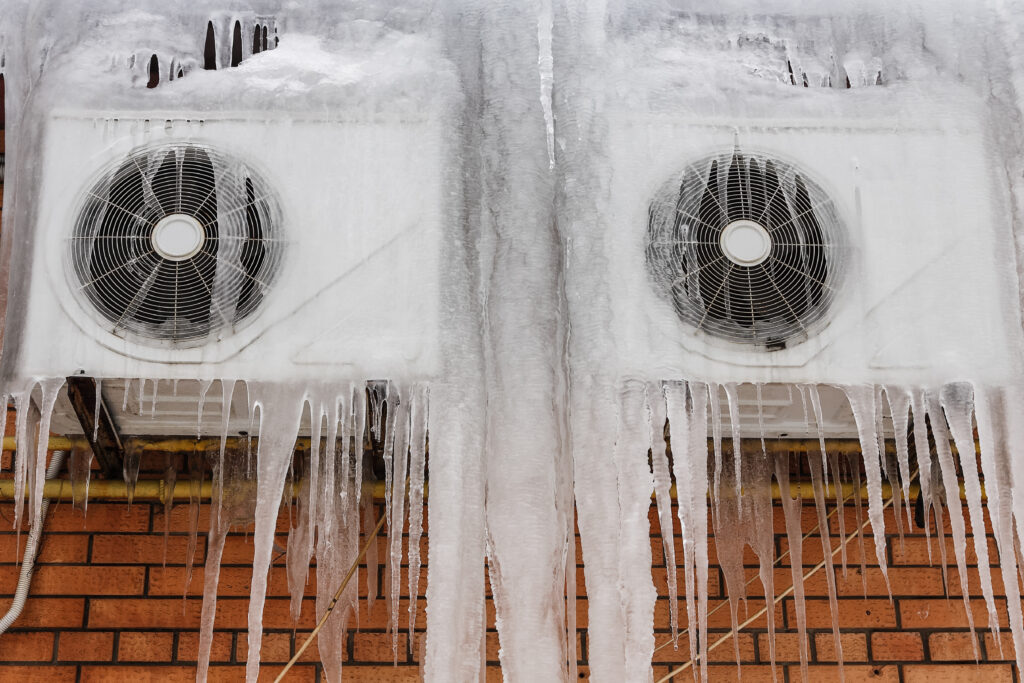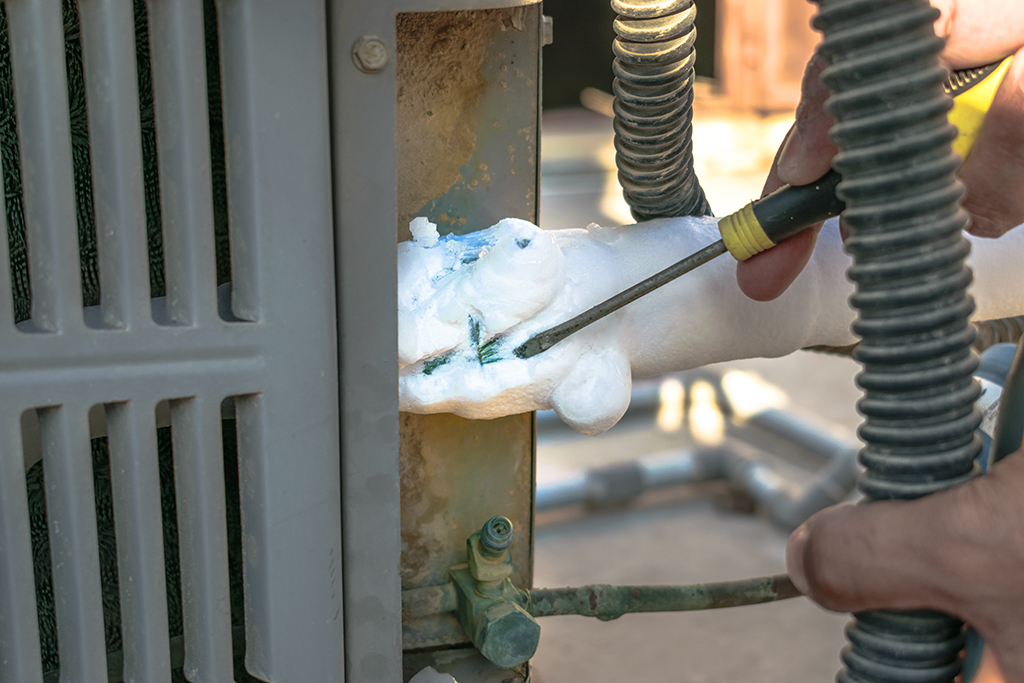Frozen AC Pipe - Identifying and Resolving the Issue Quickly
Frozen AC Pipe - Identifying and Resolving the Issue Quickly
Blog Article
We have discovered this article relating to What Causes AC Pipes To Freeze? down the page on the net and believe it made good sense to relate it with you on this site.

Introduction
Finding that your air conditioning pipe is frozen can be worrying, specifically throughout hot summertime when you rely upon your air conditioning system one of the most. Comprehending what to do in such a situation is critical to stop additional damage to your air conditioning system and ensure your comfort inside.
Recognizing the Causes
A number of aspects can contribute to the freezing of an air conditioning pipeline. Recognizing these causes can aid you resolve the issue successfully.
Absence of Airflow
One usual source of a frozen a/c pipe is inadequate air movement. When the air flow over the evaporator coil is limited, it can cause the coil to go down below freezing temperature level, causing ice development on the pipe.
Low Refrigerant Levels
Inadequate cooling agent degrees in your air conditioning system can likewise cause an icy pipeline. Low refrigerant levels can trigger the pressure in the system to go down, leading to the cold of moisture on the evaporator coil.
Winter Conditions
In cooler climates, freezing temperature levels outside can contribute to the cold of AC pipelines. If your a/c device is not appropriately shielded or if there are leaks in the ductwork, cool air can penetrate the system, causing the pipe to ice up.
Dirty Air Filters
Dirty or clogged up air filters can restrict air flow in your air conditioner system, causing various problems, consisting of an icy pipeline. It's vital to replace or clean your air filterings system frequently to make certain proper air flow and stop ice build-up.
Indicators of a Frozen A/c Pipe
Identifying the signs of an icy a/c pipeline is crucial for prompt action.
Reduced Airflow
If you notice a significant decrease in air movement from your vents, it could show a frozen pipeline.
Ice Buildup on the Pipe
Visible ice buildup on the refrigerant line or the evaporator coil is a clear sign of an icy air conditioning pipe.
Unusual Sounds from the Unit
Uncommon noises, such as hissing or bubbling, originating from your a/c system can signify that there's ice existing on the pipe.
Immediate Actions to Take
When confronted with a frozen air conditioner pipeline, it's necessary to act quickly to avoid further damage to your cooling system.
Switching off the air conditioner
The primary step is to switch off your air conditioning system to avoid the system from running and worsening the issue.
Looking for Blockages
Examine the area around the indoor device for any type of obstructions that might be obstructing air movement, such as furnishings or curtains.
Thawing the Pipe
You can use gentle methods like positioning towels taken in warm water around the icy pipe to help thaw it gradually.
Safety nets
Taking safety nets can help avoid future occurrences of an icy a/c pipeline.
When DIY Methods Fail
If your efforts to thaw the pipeline or address various other concerns are not successful, it's time to hire a specialist.
Importance of Hiring a Professional HVAC Technician
A certified HVAC specialist has the proficiency and devices necessary to identify and fix issues with your a/c system securely and properly.
Regular Maintenance Checks
Schedule routine maintenance consult a professional HVAC specialist to make sure that your air conditioner system is running efficiently.
Transforming Air Filters
Frequently replace or clean your air filters to stop air movement restrictions and maintain ideal performance.
Insulating Exposed Pipes
If your air conditioner pipelines are subjected to cool temperatures, consider shielding them to stop freezing during winter months.
Seeking Professional Help
If DIY techniques fall short to deal with the problem or if you're unsure about just how to continue, it's best to seek support from a certified HVAC professional.
Conclusion
Managing an icy air conditioner pipe can be an aggravating experience, however knowing how to react can aid lessen damages and restore convenience to your home. By recognizing the reasons, recognizing the indicators, and taking prompt activity, you can effectively attend to the concern and avoid future incidents.
Frozen AC Line: Why It Happens & What To Do About It
A frozen AC line can be a rather peculiar sight in a place like Phoenix, Arizona where nothing ever freezes. In this post, we’ll discuss what makes an air conditioner line frozen – and what you can do about it.
Dirty Air Filters
Did you know that you should be cleaning or replacing your air filters on a monthly basis? Failing to do this can result in airflow issues that, in turn, cause your evaporator coils and lines to freeze over. You’ll notice a buildup of ice on both components, although the buildup on your pipes will, of course, be more evident unless you open your air condition up to reveal the coils.
What To Do About It
Give your air filter a good cleaning if it’s reusable. If not, replace the filter outright. Next, switch your air conditioner’s fan setting on and leave it there for 2-3 hours. This will draw warm air in, helping to thaw your evaporator coil. You can also check out this article for some tips on cleaning the coils themselves if you’d like to speed the process up. Before you switch the unit back to its normal state, make sure the supply vents are completely unobstructed and free of dust or other debris.
If you keep having this issue even after replacing your filters regularly, contact a local HVAC repair company and have them inspect your evaporator coil, ductwork, and any other components that may be at fault. If you live in the Phoenix, Arizona area, give American Home Water and Air a call.
Low Refrigerant Levels/Leakage
What To Do About It
Contrary to what air conditioner “recharge” companies often tell their clients about refrigerant, it should never need to be simply refilled. You see, refrigerant runs in what experts refer to as a “closed loop.” Refrigerant really shouldn’t be leaving that loop. If it is, you’ve got a leak.
Paying someone to come and pump more refrigerant into your system (aka “recharge” it) isn’t the solution. Doing that will simply kick the can down the road. Besides, refrigerant leaks can be harmful to the environment and people in your home.
Rather, you need to take care of the leak with the help of a technician. Check out this article for some more information about dealing with air conditioners that are leaking refrigerant. Before you contact a technician, switch your thermostat to the off position. Then, switch the fan setting on and let it run for 2-3 hours so the unit can thaw.
Improper Temperature Setting
Improper temperature settings can also cause a drop in your air conditioner’s pressure. What many people don’t realize is that air conditioners are actually designed to run when temperatures have fallen above roughly 60 degrees Fahrenheit. If you run the unit when it’s cold outside, you’ll run into many issues, including frozen components.

I ran across that blog entry about Why Is Ice On My Outside Air Conditione while doing a lookup on the search engines. Enjoyed reading our piece of writing? Please share it. Let another person locate it. I love reading our article about Why Is Ice On My Outside Air Conditione.
Click Here Report this page